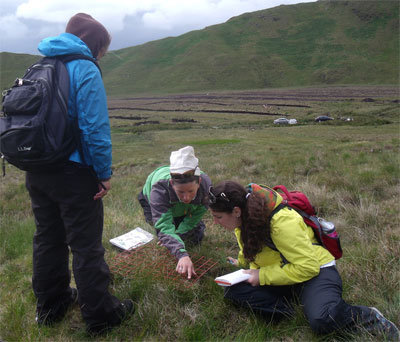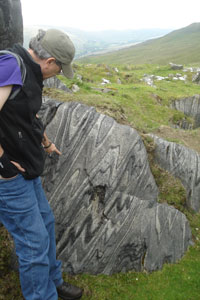Ireland Trip Provides Travel-Abroad Opportunity for Future Teachers
JMU NewsWhen Alicia Zinda steps into a classroom to teach earth science, her students will be learning from someone who has not only been taught how to teach, but who has some worldly hands-on experience with the subject, especially glaciers.

Zinda was one of five JMU students, all prospective teachers, who spent two weeks in Ireland in July as part of a new study-abroad course for IdLS (interdisciplinary liberal studies) students.
During their trip, the students started creating a field guide that they and other teachers will be able to use to teach earth science, and they also created signs for an educational and tourist area called a geopark.
Best of all, says Dr. Eric Pyle, professor of geology and environmental science, the course gives upper-level IdLS students with a mathematics and science concentration a travel-abroad opportunity that can be difficult to get. "It was a real trifecta in the sense that they get a summer course, a science course, and they get a study abroad course. All three rolled into one."

Dr. Steve Baedke, IdLS area director for math, science, and technology, added, "There are so few opportunities for math-science people to do an international exposure. This is something students have asked for for years, that we make available some international opportunity. And this is such a clever way that Eric and Mike (Renfroe, professor of biology) put this together. It's just fantastic."
Pyle and Renfroe are planning another trip in July 2012 and hope some current Virginia teachers can accompany them. The course, called "Earth & Environmental Science in Ireland," combines geology 398 and biology 426 and is designed for 16 participants, 12 IdLS students and four current teachers. The deadline to sign up is Nov. 1. Anyone interested in going should contact Pyle at pyleej. Students earn six credits, three in biology and three in geology and environmental science.
"It was a great learning experience," said Zinda, who will graduate in December. "We had a lot of time for hands-on activities and many field trips that helped us see exactly what we were studying."
Zinda said she studied the effects of glaciation on the land, particularly how they formed the landscape in Ireland. "I focused on two topics of glaciation: The fact that glaciers are erosional and that they are depository," she said.
While the main goal is to teach teachers some science and how to translate that to a K-12 audience, Pyle said it also provides a service learning opportunity. By creating signs for the geopark, "they’re really kind of giving back to the community that gives us access and permission to go on their land and see different things."
At the end of their stay, the students were required to make five- to seven-minute presentations to an audience of local residents. The student projects investigated reforestation efforts, both commercial and natural; bog botany, including different types of plants in different types of bogs; Neolithic monuments at the site and the human impact on the site over time; glacial, erosional and depositional features; and contrasting the two kinds of marble in the area.
Zinda said the poster presentations were done in a "gallery walk" fashion that elementary schools are starting to use to help students self-edit their work and to help them critique the work of their peers using subject-related questions and comments.
And there was one other benefit: "If I have questions or ideas for future programs, I can ask my friend in Ireland," Zinda said.
By David Jordan ('12) and Eric Gorton, JMU Public Affairs
Related Content

